Top 10 Traditional Delicious Turkish Dishes
1. Ezogelin corba
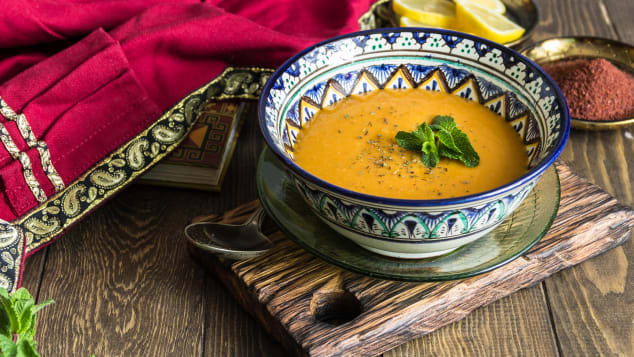
Ezogelin soup was supposedly conjured up by a woman who wanted to impress her husband's mother.
Shutterstock
As indicated by legend, this dish was thought up by a despondently hitched lady named Ezo who was attempting to prevail upon her mother by marriage through her stomach.
She devised a lively soup comprising of red lentils, domato salca (tomato glue - - sweet or hot), ground new tomatoes and onions, presented with dried mint and pul biber (bean stew chips) sprinkled on top.
There's no verification it really worked, yet for good measure, ezogelin (which in a real sense means lady of the hour Ezo), beginning from a little town close to Gaziantep, is as yet the food of decision for ladies to-be.
2. Saksuka
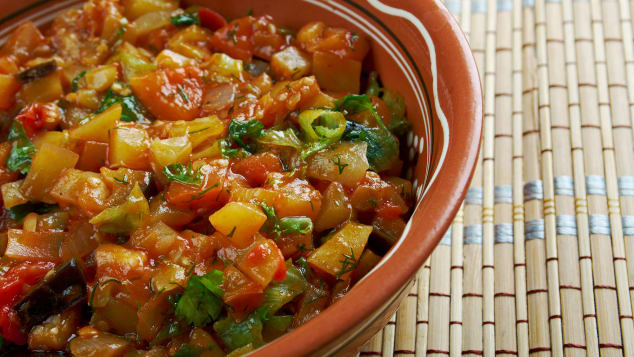
A traditional Turkish side dish, saksuka consists of eggplant, zucchinis, garlic, tomatoes and chili.
Shutterstock
Turkish food consolidates a colossal scope of vegetable dishes known as zeytinyagli yemegi - - food varieties prepared in olive oil. The larger part are vegetable-based and incorporate green beans, artichokes and obviously, eggplants.
One of the most delicious eggplant contributions is sasuka. Here satiny purple cleaned shapes of green tissue are cooked with zucchinis, garlic, tomatoes and bean stew - - the amount of the last option relying upon where in Turkey it's made.
3. Kisir
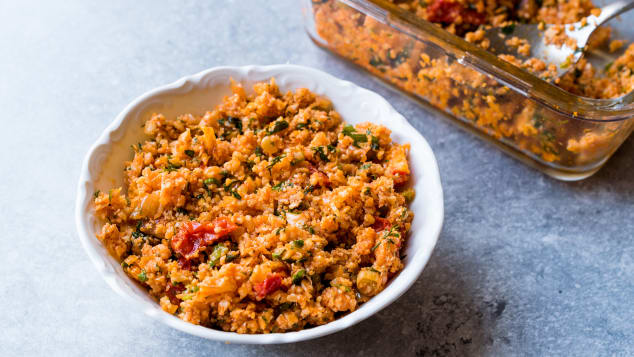
This simple salad dish is made of fine bulgur wheat, tomatoes, garlic, parsley and mint.
Shutterstock
Kisir is a plate of mixed greens produced using fine bulgur wheat, tomatoes, garlic, parsley and mint.
There are various variants from everywhere Turkey, except the Antakya one incorporates nar eksisi (sharp pomegranate molasses) and pul biber (hot red bean stew pieces). They like it hot down south.
4. Mercimek kofte
Referred to Diyarbakir local people as belluh, mercimek kofte is a veggie lover please.
Produced using red lentils, fine bulgur, salt, finely cleaved onion, scallions, tomato and aci biber salca (hot red pepper glue) and squashed cilantro, they prove to be useful reduced down servings.
Simply pop one of these chunks of flavor onto a lettuce leaf, add a crush of lemon juice, roll it up and crunch away.
5. Yaprak dolma

This traditional dish is essentially vine leaves rolled and filled with either well-seasoned rice or mincemeat.
Shutterstock
In the Isparta rendition of yaprak dolma, rice is cooked with tomatoes, a lot of parsley, onion, garlic, tomato glue, olive oil, dark pepper, salt and water.
A spoonful of this combination is put on a plant leaf, collapsed in and painstakingly moved by hand into perfect little chambers.
While leaves are sold all things considered road showcases, the best ones come from a neighbor's tree, ordinarily picked at 12 PM.
Yaprak dolma are important for Turkish Aegean food and once in a while remember a spot of cinnamon for the blend, a gesture to the Rum public, Greeks brought into the world in Turkey.
6. Inegol kofte
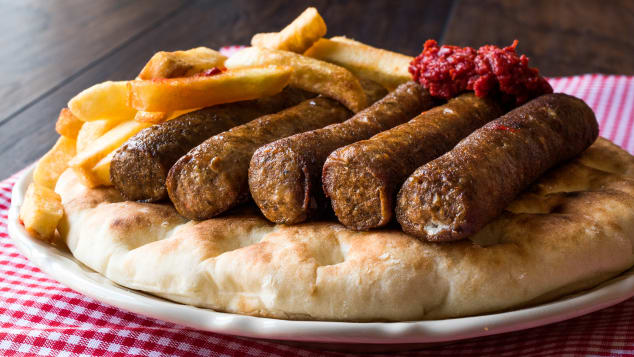
Inegol Kofte -- grilled meatballs made using ground beef or lamb, breadcrumbs and onions.
Shutterstock
Meatballs are far beyond chunks of meat in Turkish food. Each style brings its own novel serve of history.
One of the most mind-blowing known is Inegol kofte, created by one Mustafa Efendi. Initially from Bulgaria, he moved to Inegol in northwest Turkey in the nineteenth century.
Dissimilar to other Turkish kofte his blend utilizes just ground hamburger or sheep and breadcrumbs, prepared with onions.
6. Iskender kebab
Situated in northwest Turkey, Bursa is well known for three things - - silk, the ski fields of Uludag and a kind of kebab called Iskender.
Evidently an honorable man of a similar name previously cooked this dish for laborers in the city's Kayhan Bazaar back in 1867.
Dainty cuts of doner meat are respectfully laid over slices of stout pide bread, covered in newly made pureed tomatoes, immersed with a hint of sizzling liquefied margarine and presented with a part of tart yogurt, barbecued tomato and green peppers.
7. Cag kebab

To prepare this dish, marinated lamb meat is roasted on a horizontal rotating spit and cooked over a wood fire.
Shutterstock
Individuals of Erzurum view their meat exceptionally in a serious way. To such an extent, they're ready to stand by over 12 hours for a bit of hot and scrumptious sheep cag kebab.
First the meat is spread with a blend of onions, salt and dark pepper and left to marinate for a large portion of a day. Then it's taken care of onto a long stick and cooked on a level plane over a wood fire.
Divine all alone, cag kebab is additionally served enclosed by level magmas bread with cuts of tomato, white onion and long slender green peppers called sivri.
8. Hamsili pilav
Hamsi, also known as European anchovy, is a staple in Turkish Black Sea kitchen. In the city of Rize, the thin fishes are ready with rice to make Hamsili Pilav.
This dish is cooked in a stock produced using seared onions, margarine, peanuts, Turkish allspice and raisins, which is blended in with new parsley and dill. Then fileted anchovies are organized over the rice and the entire parcel is cooked in the stove.
9. Perde pilav
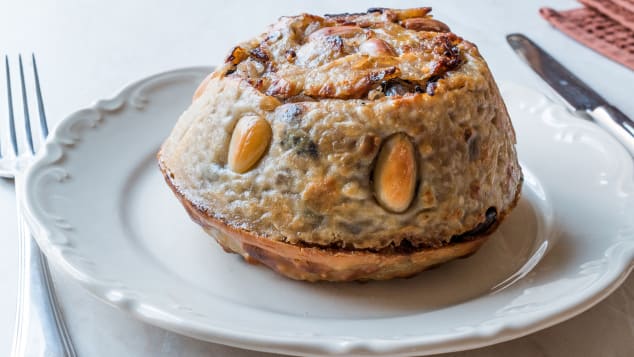
Perde pilav -- a buttery dough filled with rice, chicken, currants, almonds, pine nuts and butter.
Shutterstock
The town of Siirt is home to perde pilav, or shade rice, a rice-based dish enveloped by a lavish rich mixture, heated in a broiler and served up hot.
Generally served at weddings, perde pilav is cooked with chicken, currants, almonds, pine nuts and margarine, and prepared with salt, oregano and pepper.
The state of the dish is remembered to address the production of another home - - the rice represents fruitfulness and the currants are for future youngsters.
10. Manti
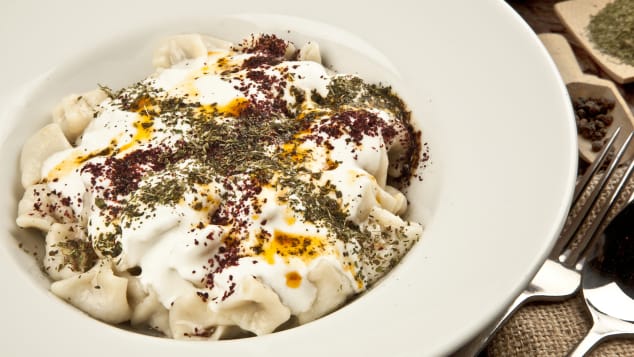
The most coveted version of these tasty Turkish dumplings are made in Kayseri, Central Anatolia.
Shutterstock
The most famous kind of manti, little squares of batter with different fillings, are those made in Kayseri.
This focal Anatolian variant contains a spoonful of mince fixed into a little bundle, yet they use cheddar somewhere else. The manti are dropped into bubbling water and finished off with yogurt and pul biber (stew pieces).
Rumors from far and wide suggest, a decent Turkish housewife can make them so little that 40 fit onto one spoon.

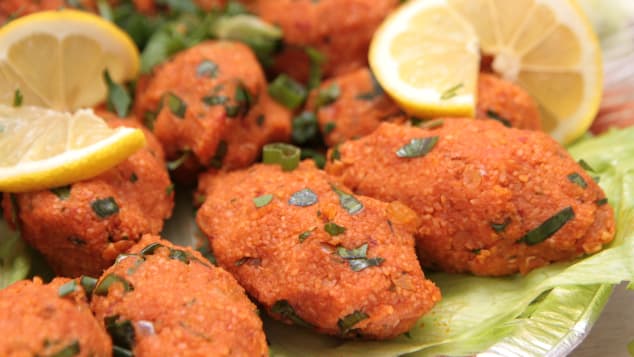
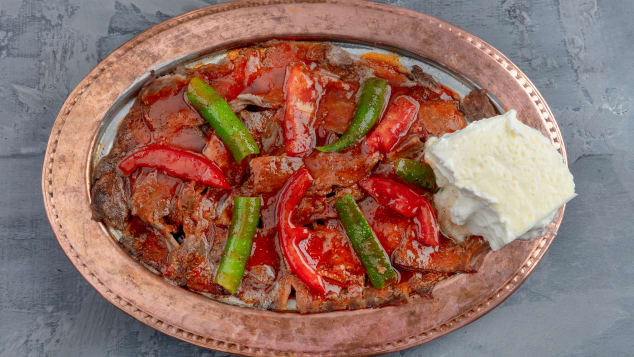
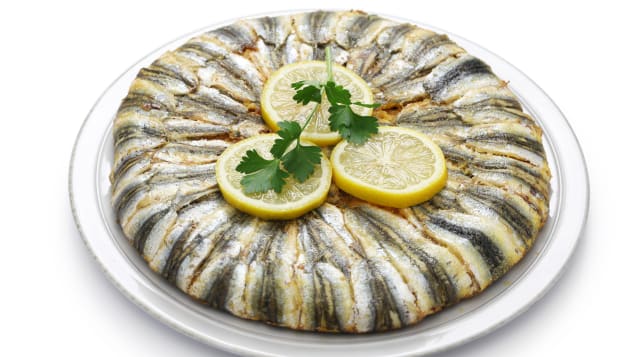


1 Comments
Tasty
ReplyDelete